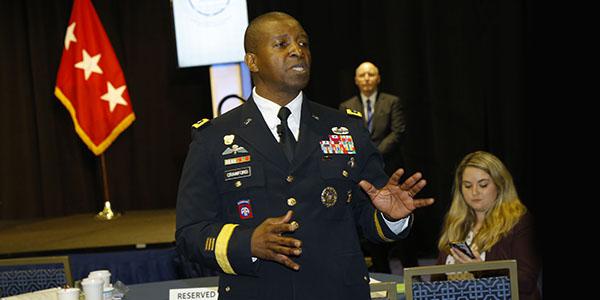Army Communicators Advance Agenda
In a little more than four months, the U.S. Army has made significant progress in its thrust to modernize its network for the warfighter. Following “a lot of introspection,” the Army is undergoing ”a wholesale shift” that already has generated two real changes, declares Lt. Gen. Bruce T. Crawford, USA, Army G-6 and chief information officer (CIO).
As outlined by Gen. Crawford in SIGNAL Magazine’s February issue, the Army has determined its current network does not serve the needs of the soldier or the commander in modern combat. Emerging network capabilities are adding to force requirements, and potential adversaries have taken aim at U.S. military information systems. The nature of combat is evolving rapidly, and the existing network is too complex, too fragile and insufficient to meet growing requirements, the general contends.
The Army is moving to implement substantial changes, two of which already are showing results. One of those two changes is that the cross-functional teams tasked with helping bring about Army network modernization are beginning to harvest the fruit from seeds planted a few months ago, Gen. Crawford states. This follows the announcement of the Futures Command standup last October. “You’re seeing tangible evidence that all six of the cross-functional team leaders are making progress in terms of not only the future state, but also what’s available now.” He describes it as a “unity of effort approach” to modernizing the Army.
The other major development is that the Army is beginning to see evidence of institutional change, he observes. “This is not just about what we buy, but how we buy it—how do we shape the institution so we have more of a DOTMLPF [doctrine, organization, training, materiel, leadership and education, personnel and facilities] approach instead of just a technology-based approach.”
Gen. Crawford admits that many remain skeptical about this institutional change, and he welcomes the skepticism as a check against inertia. But the Army is beginning to “spread its wings” about working with others, including nontraditional partners, for change.
“I think this is a tremendous thing for the Army and the nation,” Gen. Crawford says about these activities.





Comments